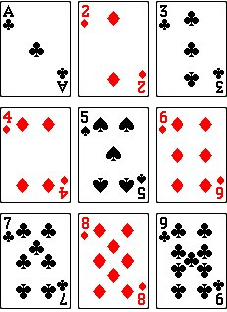12-240/Classnotes for Thursday October 18: Difference between revisions
| Line 17: | Line 17: | ||
3.W <math>\subset \!\,</math> V a subspace then W is finite dimensioned and dim W <math>\le \!\,</math> dim V |
3.W <math>\subset \!\,</math> V a subspace then W is finite dimensioned and dim W <math>\le \!\,</math> dim V |
||
If dim W = dim V, then V = W |
|||
If dim W < dim V, then any basis of W can be extended to be a basis of V |
|||
Proof of W is finite dimensioned: |
Proof of W is finite dimensioned: |
||
Let L be a linearly independent subset of W which is of maximal size. |
|||
Fact about '''N''' |
|||
: Every subset A of '''N''', which is: |
|||
1. Non empty |
|||
2. Bounded : <math>\exist \!\,</math> N <math>\in \!\,</math> '''N''', <math>\forall \!\,</math> a <math>\in \!\,</math> A, a <math>\le \!\,</math> |
|||
== class note == |
== class note == |
||
Revision as of 11:58, 18 October 2012
| |||||||||||||||||||||||||||||||||||||||||||||||||||||||||
Riddle Along
The game of 15 is played as follows. Two players alternate choosing cards numbered between 1 and 9, with repetitions forbidden, so that the game ends at most after 9 moves (or four and a half rounds). The first player to have within her/his cards a set of precisely 3 cards that add up to 15 wins.
Does this game has a winning strategy? What is it? Who wins, the first to move or the second? Why am I asking this question at this particular time?
See also a video and the transcript of that video.
| Dror's notes above / Students' notes below |
Theorems
1. If G generates, |G| n and G contains a basis, |G|=n then G is a basis
2. If L is linearly independent, |L| n and L can be extended to be a basis. |L|=n => L is a basis.
3.W V a subspace then W is finite dimensioned and dim W dim V
If dim W = dim V, then V = W If dim W < dim V, then any basis of W can be extended to be a basis of V
Proof of W is finite dimensioned:
Let L be a linearly independent subset of W which is of maximal size.
Fact about N
- Every subset A of N, which is:
1. Non empty
2. Bounded : N N, a A, a











